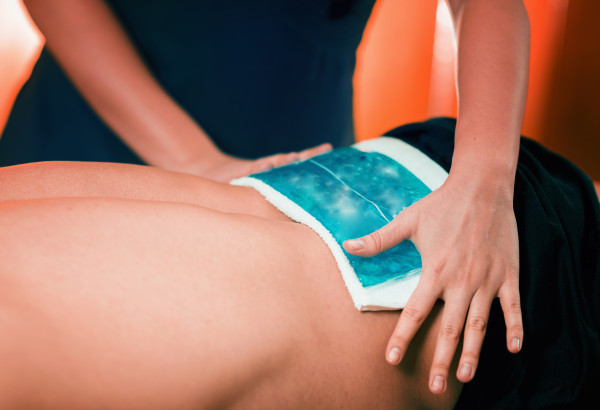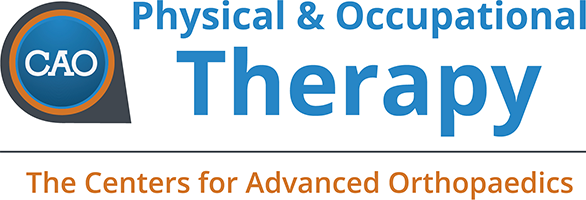Modalities


A modality is an intervention that typically utilizes an electrical, thermal or mechanical energy that result in physical, or sensory changes. Depending on the type of modality it can be used to relieve pain, improve circulation, decrease swelling, reduce muscle spasm, or even help deliver medication through the dermis. Modalities include electrical muscle stimulation, ultrasound, heat, ice, vasopneumatic compression and traction.
Vasopneumatic Compression
Vasopneumatic compression is used to reduce inflammation and swelling in the upper or lower extremities following an injury or surgery. The compression can be augmented by the use of an ice pack which may be pre-fitted to an inflatable garment, with either one pressure compartment or multiple pressure compartments. While on, each compartment gradually inflates, stays compressed for a brief period, and decompresses, then repeats typically over a session of 10-15 minutes in the therapy setting. A typical indication for vasopneumatic compression is to reduce edema (swelling). Compression of tissue can elevate the pressure of fluid in interstitial spaces higher than that of blood and lymph vessels. The change in pressure gradient may facilitate the flow of fluid out of the interstitial space back into the venous and lymphatic vessels for drainage (Cameron, 425).
What Conditions Benefit from Vasopneumatic Compression?
Anyone who has swelling, pain, and doesn’t have any contraindications can use vasopneumatic compression.
Cameron, M. H. (2018). Physical agents in rehabilitation: An evidence-based approach to practice. St. Louis: Elsevier.
Electrical Stimulation
Electrical stimulation (e-stim) is used in a therapy setting as an adjunct to a rehabilitation program for many patients. There are different kinds of electrical stimulation that each function in unique methods lending themselves to the treatment of different conditions. Each provider will help to determine which of the following types would be suited for each individual patient’s needs.
Interferential Current
Interferential Current (IFC) is arguably the most common type of e-stim and it is used for pain relief. Electrodes are placed on the skin surrounding the patient’s painful area, and an electrical current runs between a pair of electrodes to interfere with the pain message that their body is sending to the brain. This results in pain relief stemming from acute, chronic and post-surgical conditions. A typical IFC treatment lasts between ten and fifteen minutes however a carry-over effect has been shown to occur providing some degree of pain relief continuing for a few hours after the treatment concludes.
Neuromuscular Electrical Stimulation
Neuromuscular Electrical Stimulation (NMES) is used to re-educate and re-establish communication between the body’s nerves and muscles. NMES increases circulation, relaxes muscle spasms and improves the quality muscle contractions. Electrodes are placed on specific muscle groups and the electrical current is adjusted to an intensity that causes the muscle to contract. This restores proper firing mechanics which are needed to prevent muscle atrophy, and it provides a solid foundation for muscle strengthening.
Russian Stimulation
Similar to NMES, Russian Stimulation uses a higher-frequency electrical current to increase muscle size and endurance. With the electrodes positioned on the muscle, the patient is instructed to perform a muscle contraction or exercise simultaneously with the electrical muscle contraction. This co-contraction fires the muscle with increased intensity which strengthens the muscle and accelerates muscle recovery. This form of e-stim was made popular when it was used to enhance training of Russian Olympic athletes in the 1970s.
Traction
Traction is used in our clinics to provide decompression of the cervical or lumbar spine. A distracting force is applied to the targeted region of the spine, set per the patient’s tolerance, evidence-based values and the therapist’s clinical judgement. This can be performed manually by a clinician or on a specific medical device designed for the treatment.
How Does Traction Work?
Traction creates a decompression force by opening up space between the vertebrae, which can decrease the symptoms created by a bulging or herniated disc by decreasing the compression of nerve roots. This decompression decreases pain and radicular symptoms which may travel down a patient’s limb. Mechanical Traction can also relax the muscles surrounding the spine which can relieve neck or low back pain due to whiplash, concussion and other injuries.
What are the different types of traction?
Manual Traction
Manual traction is performed by a therapist using their hands to place the selected joint(s) in a state of traction or decompression. The manual force they generate can elongate soft tissue and create a gapping between the vertebrae. Manual traction is usually intermittent and brief in nature. It is often combined with other soft tissue mobilizations, and treatments to maximize the therapeutic benefit to the patient.
Mechanical Traction
Mechanical traction is a treatment technique that uses a device that is graded to perform traction under specific parameters. Mechanical traction can be performed continuously or intermittently and is often combined with moist heat, vibration, or electrical stimulation. The force of the traction is determined based on evidence-based percentages of the patient’s body weight. This type of treatment should only be considered after examination by a licensed therapist or physician who determines it to be effective and safe.
What conditions can benefit from traction?
The application of traction should be determined to be a clinically relevant and safe intervention for each patient before use. Some conditions that commonly benefit from the use of traction are:
- Degenerative Disc Disease
- Herniated discs
- Facet Disease
- Sciatica
- Nerve impingement
- Cervical Spondylosis
- Lumbar Spondylosis
- Radiculopathy
For further information regarding any of these Modalities and to find out whether any of these treatments may be appropriate for you, please reach out to one of our therapists who will be happy to discuss these options with you.


